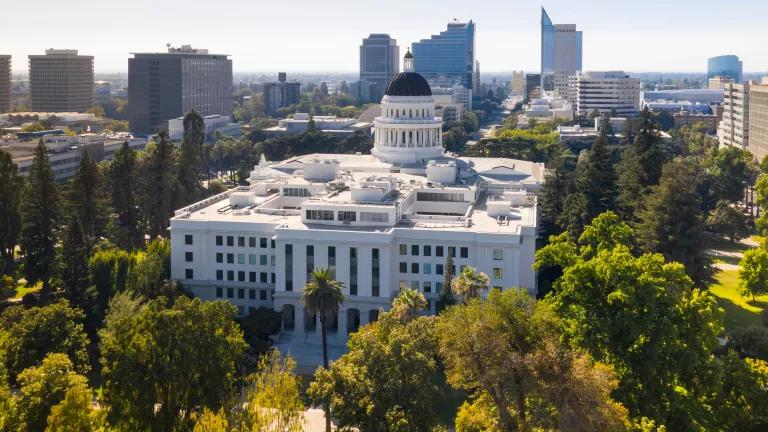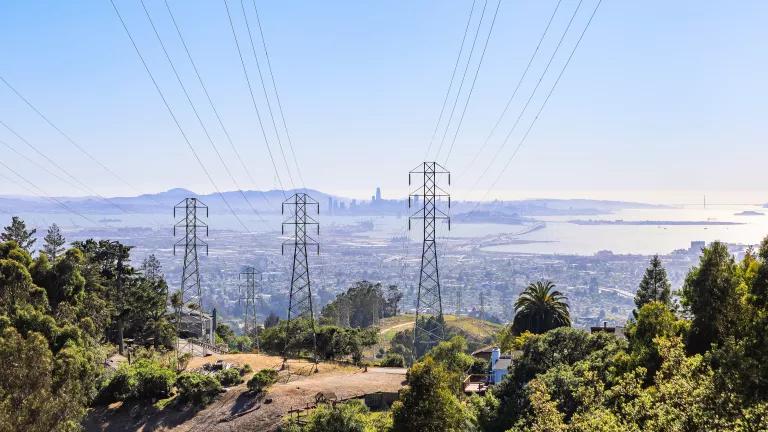The California Air Resources Board just released a sweeping set of proposed amendments to the cap-and-trade program, a key element of the state’s comprehensive effort to cut greenhouse gas emissions under AB 32, the Global Warming Solutions Act. The amendments offered earlier this week cover a wide range of issues that are the subject of a workshop today (July 18).
There is plenty to applaud in the package as a whole. In response to direction from the Board, Air Resources Board staff designed proposals on cost containment and so-called “legacy contracts” (concerning a handful of electricity contracts that predate the passage of AB 32) that address the Board’s concerns while maintaining the environmental integrity of the program. The staff’s direction to natural gas suppliers to ensure allowance value is returned to customers non-volumetrically (i.e., the more you use does not equal the more you get), will also preserve strong incentives for efficiency and conservation for natural gas customers.
But the staff’s proposal to extend transition assistance for the industrial sector without any supporting analysis warrants reconsideration. If adopted, the proposal would distribute significantly more pollution allowances directly to the state’s largest emitters in lieu of requiring their purchase at auction – providing far less certainty that the value of those allowances will be used for the benefit of consumers and to further the purposes of AB 32.
The ARB staff defends the move “in order to provide additional certainty and time to industry to successfully transition to lower-carbon production methods.” Yet the passage of AB 32 is already seven years in the rearview mirror and two years of 100 percent transition assistance are already baked into the rule (through 2014). Instead of rewarding early action on the part of industry to plan, invest, and innovate to reduce its pollution, this only rewards stall, delay, and obstruction.
The staff also notes that the supplemental analysis it is conducting to assess the risk of “leakage,” i.e. shifting production and emissions outside California to jurisdictions without comparable carbon pollution reduction requirements, is not yet completed. We fully agree ARB should take the necessary steps to minimize leakage, as required by AB 32. Leakage undermines environmental and economic objectives alike, and is vital for California to prevent to establish a strong foundation on climate policy for others to follow.
But nowhere does the ARB staff acknowledge the risks of over-compensating for leakage risk – which are just as cautionary. Allowances in a cap-and-trade system have economic value regardless of how they are initially distributed. That means industries still face a “cost” when they use emission allowances for compliance even if they received them for free, since they are foregoing the opportunity to profit from their sale on the market (known in economics parlance as an “opportunity cost”). As any Econ 101 professor will tell you, industry treats opportunity costs just like any other, and will do what it can to pass them through to consumers.
It’s worth noting that the amendments do not propose to adjust the emissions cap level or its rate of decline – which, importantly, ensures emissions will be reduced regardless of how the allowances are allocated. Likewise, allocations to industry will still be short of their historical emissions, and benchmarked to reward the most efficient producers – meaning industry will need to either reduce emissions directly or purchase allowances to comply with the regulation. The program overall thus still provides a strong incentive and mandate to the state’s largest emitters to reduce their carbon pollution.
But ARB cannot ignore the equity and distributional impacts of how it allocates the value of emissions allowances. Unless and until new research reveals leakage risk exceeds current assistance levels, the Board should ensure allowance value is put to use where it can be certain it will benefit all Californians and help achieve the goals of AB 32.



